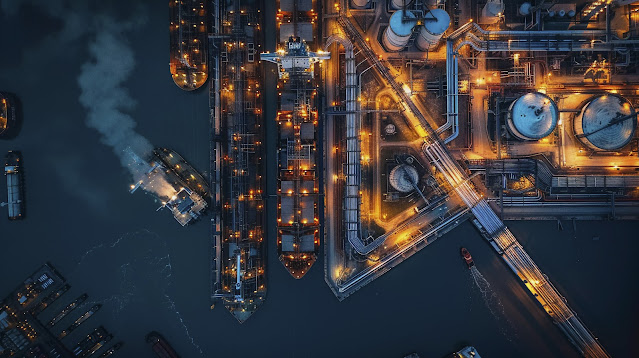How Mining and Minerals Companies in India Are Upgrading with Modern Material Handling Equipment
India’s mining sector is undergoing a transformative phase, driven by the increasing demand for minerals such as iron ore, coal, bauxite, and limestone. With global and domestic industries relying on timely and quality raw material supply, efficiency in mining operations has never been more critical. As a result, mining and minerals companies in India are investing heavily in advanced technologies—particularly in mining material handling equipment—to boost output, safety, and sustainability.
Why
Material Handling Matters in Mining
Material handling refers to the
process of moving, storing, and controlling mined materials efficiently from
the excavation site to processing plants or loading points. In large-scale
mining operations, this includes a range of equipment such as conveyors,
stackers, reclaimers, crushers, hoppers, and loading systems.
Manual or outdated systems can lead
to bottlenecks, higher fuel consumption, increased wear and tear, and safety
hazards. To overcome these challenges, companies are integrating automated,
sensor-based, and energy-efficient material handling technologies into their
operations.
Technological
Advancements in Material Handling
The evolution of material handling
equipment is changing the way India’s mining companies operate. Some notable
upgrades include:
- Automated Conveyor Systems: These reduce manual labor, increase transport speed,
and support real-time monitoring of material flow.
- Remote-Controlled Loaders and Stackers: Improve safety by keeping operators out of hazardous
zones.
- Integrated Dust Suppression Systems: Help meet environmental regulations and reduce air
pollution at mining sites.
- Smart Control Units and Sensors: Offer predictive maintenance, minimize breakdowns, and
ensure efficient usage of equipment.
These technologies not only reduce
downtime but also improve overall output while minimizing human intervention.
Impact
on Indian Mining Companies
As
competition intensifies and compliance requirements grow stricter, the adoption
of cutting-edge mining material handlingequipment has become a strategic priority. Industry players are using these
technologies to streamline workflows, reduce material loss, lower energy costs,
and improve employee safety.
This modernization is especially
visible in regions like Odisha, Chhattisgarh, and Jharkhand, where major mining
operations are based. Public and private sector players are both upgrading old
systems and setting up new facilities equipped with world-class infrastructure.
Challenges
and Considerations
Despite the clear benefits, several
challenges remain. High initial investment costs, skill shortages, and
integration with existing systems can slow down adoption. However, many
companies view this as a long-term investment that ensures operational
stability, higher throughput, and regulatory compliance.
To address these challenges, some
companies are partnering with specialized engineering firms and OEMs (Original
Equipment Manufacturers) that provide custom-built solutions tailored to the
mining landscape of India.
Conclusion
Modernizing with
efficient mining material handling equipment is no longer an option—it is a
necessity for forward-looking mining enterprises. As the industry shifts
towards automation and environmentally responsible practices, companies that
invest in smart, reliable equipment will gain a competitive edge. One such
example is Naaraayani Minerals Private
Limited, a company actively implementing high-performance handling
systems to enhance productivity while maintaining sustainable operations in
India’s evolving mining ecosystem.




Comments
Post a Comment